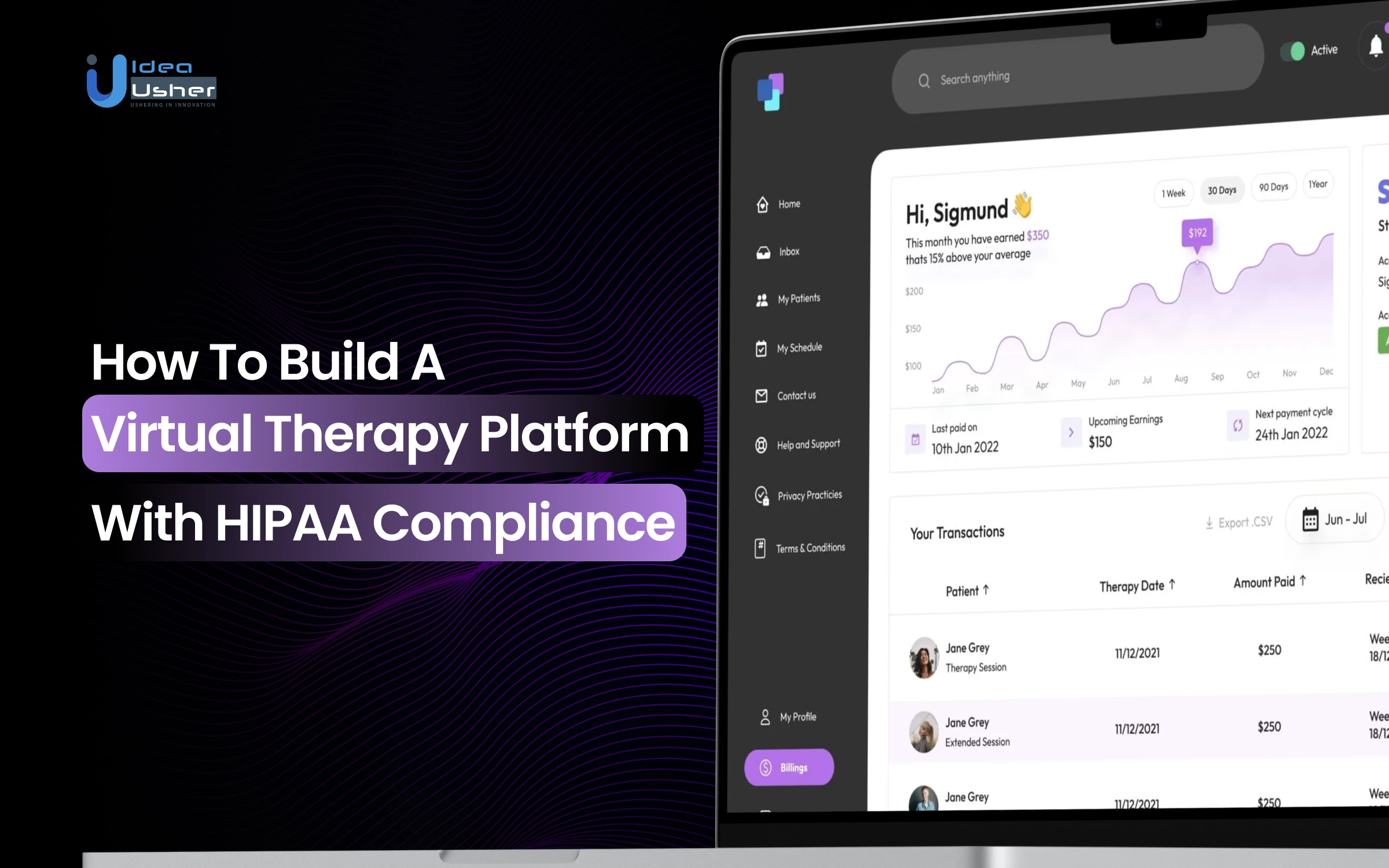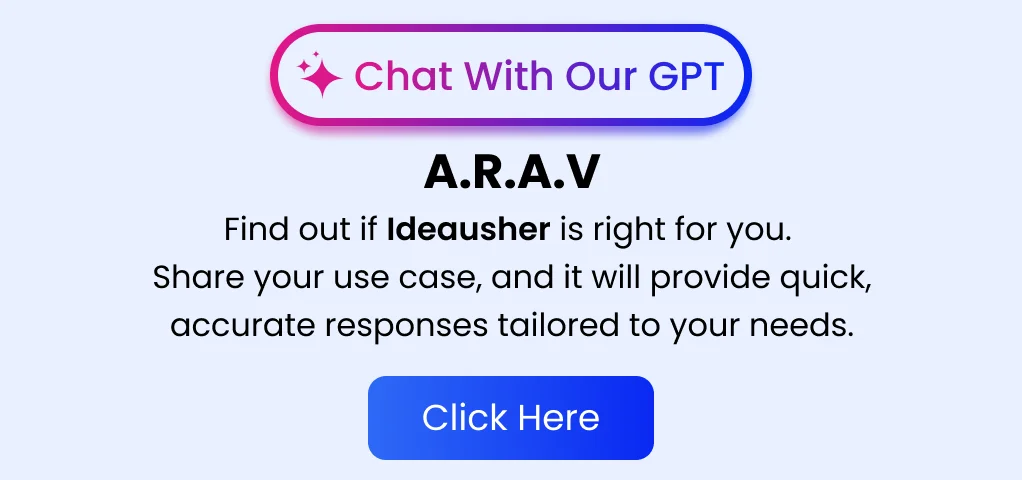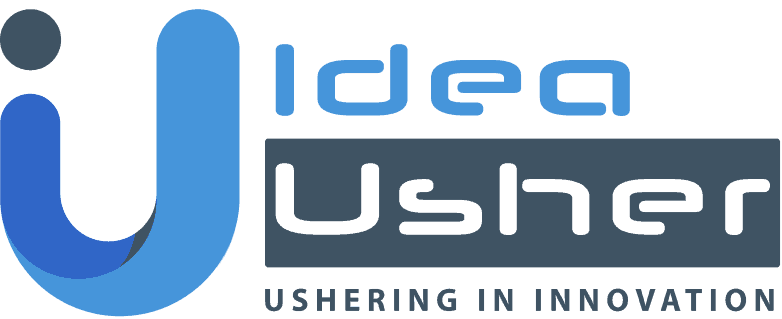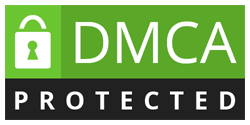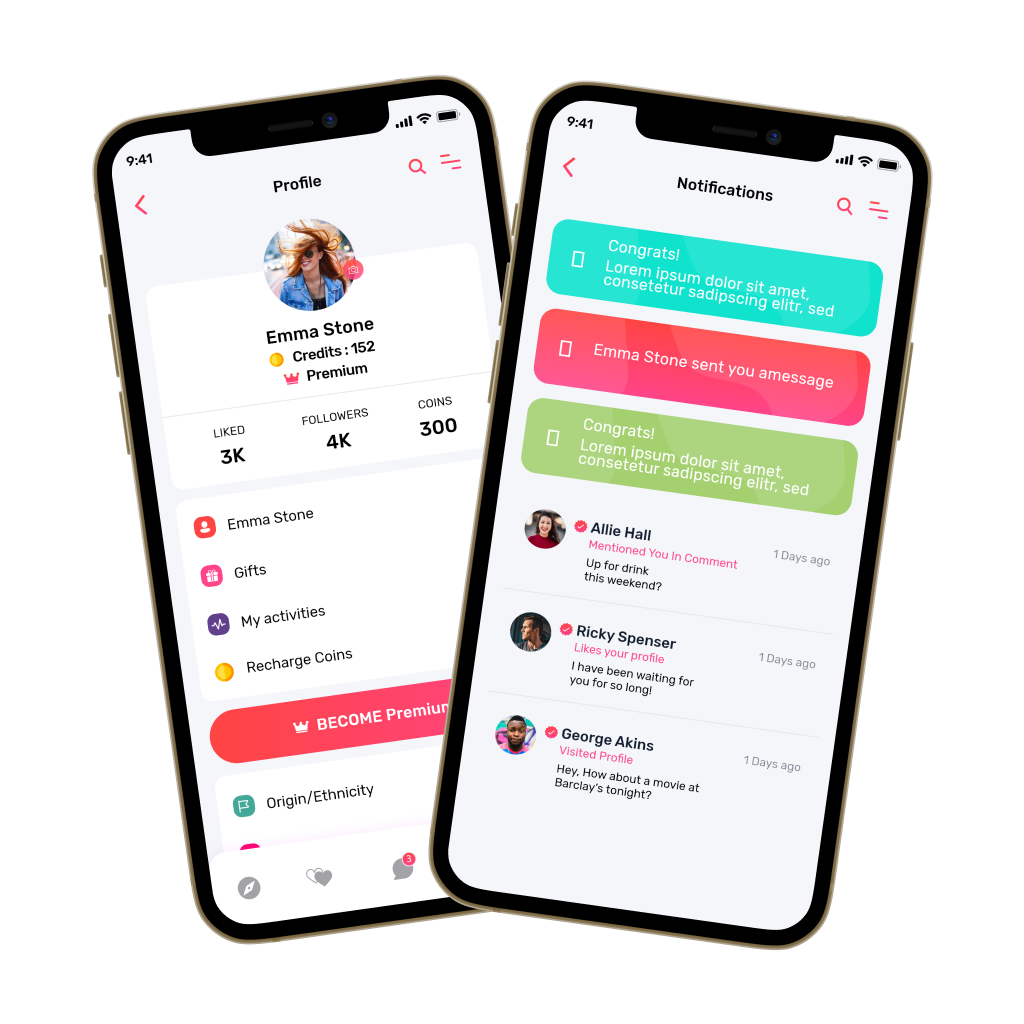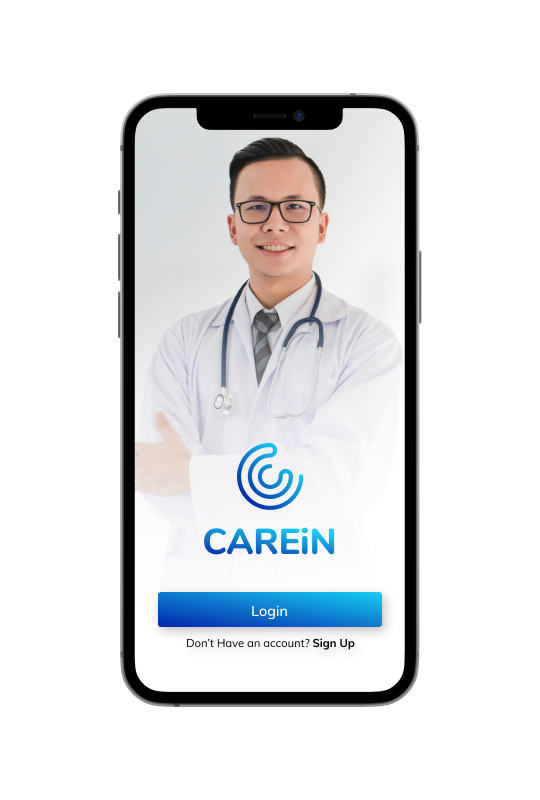As more and more people look for therapy options, virtual therapy platforms have become an easy and effective way to get help. This shift offers greater accessibility, especially for those who may have faced barriers to traditional in-person therapy. But building a platform that’s both functional and secure is crucial. You must ensure the platform complies with HIPAA to protect patient privacy and maintain trust. While this might sound challenging, it’s entirely doable with proper tools and the right approach.
In this blog, we’ll walk you through how to build a virtual care platform that truly works for both patients and healthcare providers. You’ll learn the technical requirements, best practices, and key considerations that can help you create a secure and reliable system for modern healthcare. With IdeaUsher’s expertise, businesses can build a HIPAA-compliant virtual therapy platform that ensures secure, accessible, and efficient care for all patients.
Key Market Takeaways for Virtual Therapy Platforms
According to TowardsHealthcare, the global online therapy market is booming, valued at USD 4.39 billion in 2025 and expected to reach around USD 14.10 billion by 2034, growing steadily each year. This surge shows how much people value convenient and accessible mental health care through technology. Awareness around mental health and the acceptance of virtual care are key drivers behind this growth.

Source: TowardsHealthcare
Virtual therapy platforms are becoming more popular because they offer flexible, affordable, and stigma-free access to care. Users can easily connect with licensed therapists through video calls, chat, or messaging. This helps eliminate barriers like location and scheduling issues. Online, evidence-based therapies are proving effective, especially for younger, tech-savvy users.
BetterHelp and Talkspace are leading examples in this space. BetterHelp provides a broad network of therapists with flexible options to fit different needs. Talkspace sets itself apart by partnering with employers and insurers to integrate mental health support into wellness programs. These models show how virtual therapy can adapt to meet diverse user needs.

What Is a Virtual Therapy Platform?
A virtual therapy platform is a specialized digital environment that enables remote therapeutic interactions between patients and licensed providers. Unlike basic video conferencing, these platforms are integrated systems designed to support every aspect of the therapeutic process.
Key features of virtual therapy platforms include:
- Synchronous Communication: High-quality video and audio sessions that mirror in-person interactions.
- Asynchronous Communication: Secure messaging for ongoing care between sessions, allowing patients to share updates and therapists to provide feedback.
- Clinical Workflow Management: Integrated tools for appointment scheduling, digital intake forms, and billing management.
- Resource Sharing: Secure portals for sharing therapeutic exercises, educational materials, and tracking progress.
Why HIPAA Compliance is Necessary for Virtual Therapy Platforms?
HIPAA compliance is crucial for virtual therapy platforms because it ensures the protection of sensitive patient information. Without it, platforms might face legal risks, financial penalties, and a loss of patient trust. Being compliant not only safeguards data but also builds credibility and opens doors to more healthcare partnerships.
1. The Legal Mandate
Platforms that handle Protected Health Information (PHI) must adhere to HIPAA regulations. If they don’t, they are exposed to severe consequences:
- Financial Penalties: Fines from the Department of Health and Human Services can reach up to $1.5 million per violation category, per year.
- Criminal Charges: Knowingly mishandling PHI can result in criminal penalties, including imprisonment.
- Exhaustive Oversight: Non-compliant platforms may face multi-year audits and corrective action plans that drain resources.
2. The Foundation of Patient Trust: Confidentiality Is Key
The therapeutic relationship relies on trust and confidentiality. Patients must feel secure when sharing their most sensitive experiences, and HIPAA-compliant platforms serve as a “digital vault” for this information.
A data breach in a non-compliant system can damage the trust a patient places in their therapist. It may also harm their emotional well-being and hinder their progress in therapy. This can make it much harder for them to feel safe and open during future sessions.
3. The Business Imperative
HIPAA compliance can give your platform a real edge in the market. It helps build trust and shows you are serious about patient security and care.
- Market Access & Credibility: Legitimate healthcare organizations and insurance providers won’t partner with platforms that can’t prove HIPAA compliance. A signed Business Associate Agreement opens doors in the healthcare market.
- Superior Technology: HIPAA’s stringent requirements push developers to create more secure, resilient software, resulting in a better product.
- Brand Reputation & Risk Mitigation: Promoting HIPAA compliance shows your commitment to security and patient care, enhancing your brand’s reputation and protecting against the fallout from data breaches.
AI-Powered Add-On Features for Virtual Therapy Platforms
AI-powered features like progress tracking and personalized recommendations can make your virtual therapy platform more valuable. You can promote these features to users and encourage them to pay for the added benefits. This could ultimately boost your revenue and improve overall user satisfaction.

1. AI-Powered Clinical Progress Tracking
AI can help track a patient’s progress by analyzing session transcripts and other data. It can predict when someone might need extra support so therapists can act sooner. This feature could really enhance therapy outcomes and even improve patient retention.
Revenue Opportunities
- Premium Tier Add-On: Offer this feature as part of an advanced tier for therapists, charging an additional $20-$50 per month for automated reports and insights into patient progress.
- B2B Value: This data-driven approach appeals to enterprises and insurers, justifying a higher Per Employee Per Month (PEPM) fee by demonstrating ROI through reduced relapse rates and improved employee productivity.
- Patient Upsell: Provide patients with access to a simplified “Wellness Dashboard” for a small monthly fee ($5-$10), increasing engagement and boosting average revenue per user.
Example: Lyra Health integrates AI-driven progress tracking and outcome measurement to deliver data-driven, effective care, making it appealing for large enterprise contracts.
2. Asynchronous AI Chatbot
An AI-powered chatbot can offer 24/7 support using proven techniques like CBT and DBT. It helps patients track their mood, receive coaching, and manage crises in real time. This could really provide extra reassurance between therapy sessions and improve overall care.
Revenue Opportunities
- Direct Subscription Add-On: Charge patients an additional $15-$30 per month for “24/7 Support” or “On-Demand Coaching,” reducing anxiety and increasing retention by providing constant access to therapeutic support.
- Freemium Model: Offer the chatbot for free up to a certain point, then upsell patients to live therapy if they need further assistance. This increases conversion rates from free users to paying customers.
Example: Woebot Health is a prominent example of AI chatbots in therapy, offering both direct-to-consumer options and enterprise solutions. Its integration into other health systems demonstrates a new revenue stream and high-margin scalability.
3. AI-Driven Administrative Automation
AI can help by automatically generating session notes and filling out insurance forms based on session transcripts. This feature could save therapists time and reduce administrative stress. It might even allow them to focus more on their patients and less on paperwork.
Revenue Opportunities
- Practice Manager Subscription Tier: Offer a subscription tier for therapists ($30-$60 per month) that automates session note generation and insurance billing. This can save therapists hours of administrative work, increasing their productivity.
- Insurance Processing Fee: Take a small percentage (3-5%) of insurance claims processed through the platform. This aligns your revenue directly with the value created by reducing administrative burden for therapists.
Example: Headway has been developing AI tools for billing and credentialing, and integrating AI for note-taking and administrative tasks can further streamline operations while creating a revenue-generating product for therapists.
4. Personalized Resource Recommendation
AI can analyze patient data to suggest personalized resources like self-help modules and meditation exercises. These tailored recommendations might help patients stay engaged and make progress outside of therapy sessions. It could really enhance the overall experience and support long-term well-being.
Revenue Opportunities
- Micro-Transactions for Premium Content: The AI engine can recommend premium content (e.g., “Advanced Sleep Hygiene” or “Managing Panic Attacks”) for a one-time fee of $10-$25 or as part of a premium subscription.
- Increased Perceived Value: Offering personalized recommendations justifies a higher base subscription price by delivering a more tailored healing experience, which also reduces churn.
- Partnership & Affiliate Revenue: Integrate with third-party content providers, such as wellness apps (e.g., Calm or Headspace) and book publishers. The AI engine can suggest their products, earning your platform a commission for any resulting purchases.
Example: Talkspace is an example of a platform using structured self-help content, and AI can now dynamically serve the most relevant content at the right moment in a patient’s journey, improving engagement and boosting additional purchases.
5. AI-Based Emotional Insights
AI can analyze patient conversations and mood data to give therapists deeper insights into a patient’s emotional state. This could help therapists understand their patients more clearly and respond more effectively. It might even improve the quality of care by highlighting patterns that aren’t always obvious.
Revenue Opportunities
- Enhanced Therapy Insights: Charge a premium for access to this advanced tool that provides therapists with actionable insights for more accurate treatment. This could be a $20-$40/month add-on.
- Real-Time Patient Feedback: Offer patients real-time, AI-driven emotional feedback on their messages or sessions for a small subscription fee, encouraging engagement and retention.
Example: IBM’s Watson Health has leveraged sentiment analysis in healthcare to provide deeper insights into patient emotions, and this technology could be adapted for use in virtual therapy platforms to give therapists real-time feedback.

How Does a HIPAA-Compliant Virtual Therapy Platform Work?
A HIPAA-compliant virtual therapy platform is a carefully designed system focused on securing patient data and ensuring compliance with privacy regulations. It seamlessly integrates security measures into every aspect of the user experience, from logging in to storing patient information after a session. Here’s how it works in a practical, step-by-step manner:
1. Secure Onboarding & Authentication
The first step in using the platform is registering a new patient. During this process, all entered data is secured by TLS or Transport Layer Security encryption, ensuring that the information stays protected right from the start.
Identity Verification & Access Control:
- Multi-Factor Authentication: To enhance security, both the therapist and the patient are required to use MFA. This adds an extra layer of protection by requiring a second form of verification, like a code sent to a phone.
- Role-Based Access Control: The platform assigns roles (e.g., therapist, patient, billing manager) to control access to information. For instance, therapists can access only their own patients’ records, ensuring that only necessary data is shared in line with HIPAA’s “Minimum Necessary Standard.”
2. Encrypted Session Initiation
Once a patient schedules an appointment, the system generates a unique encrypted link for the session, keeping the connection secure.
Virtual “Waiting Room”
Before the session starts, the patient waits in a secure online waiting room. The therapist admits the patient directly into the session, preventing unauthorized access.
HIPAA-Compliant Video Infrastructure
The platform uses a dedicated HIPAA-compliant video API (such as Twilio or Vonage) that is covered by a Business Associate Agreement. This ensures that the video provider is legally bound to protect the data. The video and audio streams are encrypted end-to-end, meaning data is scrambled during transmission and only decrypted on the recipient’s device.
3. Real-Time Interaction & Data Handling
During the therapy session, every communication is encrypted:
- Secure Communication Channels: All video, audio, and text messages are encrypted while transmitted, ensuring that patient data stays secure.
- Secure Clinical Tools: If a therapist shares a screen or uses collaborative tools like digital whiteboards, these are routed through the platform’s secure channels. Files like PDFs are encrypted, uploaded to secure cloud storage, and shared via protected links.
4. Post-Session Data Storage & Management
After a session ends, the platform continues to prioritize security:
Encrypted Data “At Rest”: Clinical notes, session recordings (if saved with patient consent), and billing data are encrypted using AES-256 encryption. This protects data from unauthorized access even in the event of a physical breach.
Secure Cloud Storage: The data is stored in a HIPAA-compliant cloud environment (like AWS, Google Cloud, or Azure), with a signed BAA with the cloud provider to ensure compliance.
5. Continuous Oversight & Auditing
The platform continuously monitors and protects data:
Audit Logs: Detailed logs track every action on the system, such as logins, record views, and note edits. These logs provide a tamper-evident trail that is essential for security monitoring and legal compliance.
Secure Third-Party Integrations: If the platform integrates with other systems, like an Electronic Health Record or a payment processor, these third-party vendors also sign a BAA, ensuring a secure and compliant chain of data handling.
How to Build a Virtual Therapy Platform With HIPAA Compliance?
We specialize in building secure and HIPAA-compliant virtual therapy platforms. We’ve worked closely with several healthcare businesses to create tailored solutions that prioritize both security and ease of use. Here’s how we develop these platforms to meet our clients’ unique needs.

1. Define Scope and Compliance
We start by understanding the type of therapy you offer, whether it’s mental health, physical therapy, or speech therapy. Then, we assess the data you’ll handle, like Protected Health Information, video sessions, and clinical notes. A HIPAA readiness assessment helps us identify necessary security measures.
2. Design Secure Architecture
We focus on building a secure platform architecture. End-to-end encryption using TLS 1.3 and AES-256 ensures data protection. We integrate Multi-Factor Authentication and OAuth 2.0 for secure user access, and a zero-trust approach verifies each request before granting access.
3. Develop User Interfaces
We create user-friendly, secure interfaces. The video conferencing, messaging, and file-sharing features are encrypted to protect PHI. Role-based access ensures only authorized users can view sensitive data, making the platform secure yet easy to navigate.
4. Integrate HIPAA-Compliant Services
We work with trusted vendors offering HIPAA-compliant services and Business Associate Agreements. Services like AWS, Twilio, and Zoom for Healthcare meet compliance standards. We also use FHIR/HL7 APIs for seamless EMR/EHR integration and ensure payment gateways are HIPAA-compliant and PCI-DSS aligned.
5. Conduct Security Testing
Before launch, we perform penetration testing and risk assessments to identify and resolve any vulnerabilities. We ensure that audit logs track data access and modifications. Third-party HIPAA audits help confirm the platform meets all compliance standards before going live.
6. Ongoing Monitoring and Maintenance
After launch, we continuously monitor the platform for security and performance issues. We renew Business Associate Agreements annually and update privacy policies and compliance documentation to stay in line with changing regulations.
Most Successful Business Models for Virtual Therapy Platforms
Virtual therapy platforms have revolutionized mental health care, offering diverse business models to meet different needs while ensuring accessibility and profitability. These models range from direct-to-consumer approaches to corporate solutions, each with unique strengths. Here’s a breakdown of the most successful business models for virtual therapy platforms:
1. Direct-to-Patient Subscription Model
In this model, patients pay a regular fee, either monthly or annually, for access to therapy services. This often includes a set number of live video sessions, unlimited messaging, and helpful self-help resources like journaling prompts and exercises. It’s a simple and convenient way for people to get ongoing support when they need it most.
Why It’s Successful:
- Predictable Revenue: Subscription fees create a reliable monthly revenue stream, which is highly attractive to investors and ensures financial stability.
- Patient Loyalty: Building long-term relationships with patients helps improve retention rates and overall patient outcomes, increasing customer lifetime value.
- Affordability: The subscription model often provides a more cost-effective solution compared to traditional therapy, which can charge $100-$200 per session.
For example, BetterHelp is a leader in the B2C subscription model, reaching many users through extensive digital advertising.
In 2023, its parent company Teladoc Health reported a total revenue of $2.4 billion, with BetterHelp playing a key role in that success. This shows how effective the platform is in attracting and retaining customers.
2. Enterprise Model
In this model, companies pay a fixed fee, often per employee per month, to provide therapy services. Employees can access these services without paying extra, as the cost is covered by their employer. It’s a great way for organizations to support mental health and well-being for their teams.
Why It’s Successful:
- Scalable Customer Acquisition: One B2B deal can onboard thousands of users at once, significantly lowering the effective CAC.
- Large Contract Values: Enterprise deals tend to have substantial monetary value. For example, a 10,000-person company at a $5 PEPM rate would generate $600,000 annually.
- Addresses Employer Needs: Mental health is a priority for HR departments, as providing therapy services can reduce absenteeism, improve employee productivity, and enhance retention.
Lyra Health has mastered the B2B model, partnering with major companies like Starbucks, eBay, and Netflix to offer a range of services, including therapy, coaching, and medication management. They market directly to HR departments and integrate with health plans to offer clear clinical outcomes.
3. Insurance Reimbursement Model
This model helps connect therapists with patients while handling the insurance billing process. Therapists list their services on the platform, and patients use their insurance to pay. The platform charges therapists a monthly fee or takes a small percentage of each session, making it easier for them to manage payments.
Why It’s Successful:
- Accessibility for Patients: By accepting insurance, platforms make therapy affordable for the majority of Americans, opening up a massive market.
- Attracts Skilled Therapists: Many therapists want to accept insurance but are put off by the complexities of credentialing and billing. This model addresses that pain point, helping build a broad network of providers.
- Aligns with Healthcare Infrastructure: The model integrates well with the existing U.S. healthcare system, making it a familiar option for both patients and therapists.
Headway is a great example of the Fee-for-Service model by managing insurance credentialing and billing for a large network of therapists.
They connect patients with in-network therapists for insurance-covered sessions and take a commission on reimbursements. Having facilitated over 1.5 million appointments, Headway has raised more than $200 million in funding.

Tech Stacks for Virtual Therapy Platforms With HIPAA Compliance
When building a HIPAA-compliant virtual therapy platform, it’s crucial to select the right technologies that ensure the secure handling of Protected Health Information. Below is a breakdown of the essential tools and services needed to meet HIPAA’s technical safeguards.

1. Backend & Cloud Infrastructure
The cloud infrastructure forms the foundation of your platform. It’s essential to use HIPAA-eligible services and establish a Business Associate Agreement (BAA) with your cloud provider.
| Service | AWS (HIPAA-eligible services) | Google Cloud Healthcare API | Microsoft Azure Health Data Services |
| Overview | AWS provides HIPAA-compliant services for secure data storage and processing. | Google Cloud offers tools for structured healthcare data. | Azure offers a managed platform with HIPAA-compliant health data tools. |
| Key Services | EC2, RDS (encrypted), S3 (AES-256), Elastic Load Balancing, VPC | Healthcare API for FHIR resources like patient data. | FHIR Server, DICOM Server, Azure AD for secure access. |
| Security Features | Encryption, isolated networks, secure file storage. | Structured FHIR storage with compliance features. | Built-in FHIR, DICOM support, and secure access control. |
| Use Case | Scalable compute and secure data storage. | Managing and storing structured healthcare data. | Health data integration and secure identity management. |
3. Identity & Access Management
Control over who can access data is a core requirement for HIPAA compliance. Implementing proper IAM solutions is essential for maintaining security and privacy.
Auth0 / Okta
Auth0 and Okta provide secure identity management and access control solutions, including Multi-Factor Authentication (MFA) and Role-Based Access Control (RBAC). These platforms ensure that only authorized users access PHI, enforcing the “minimum necessary” rule. They also support OAuth 2.0 and OpenID Connect for secure third-party integrations.
MFA & RBAC
Using MFA ensures that user accounts are protected from unauthorized access, while RBAC allows you to control access to PHI based on roles (e.g., therapist, patient, admin). Both are critical for meeting HIPAA’s security standards.
4. Communication & Telehealth APIs
HIPAA-compliant communication tools are crucial for secure video consultations and chat functionalities.
Twilio for Healthcare (Video & Chat)
Twilio’s video and chat APIs provide end-to-end encryption and HIPAA-compliant services. It offers secure video consultations and chat functionalities, allowing for a seamless telehealth experience while ensuring that patient data is protected.
Vonage Video API (HIPAA-ready)
Vonage’s HIPAA-ready video API offers high-quality, low-latency video calls. With additional features like session recording and cloud storage integration, it supports telehealth services while meeting HIPAA standards for security and data privacy.
Zoom for Healthcare
Zoom for Healthcare offers a reliable, HIPAA-compliant telehealth platform. It provides secure video conferencing with a familiar interface but might offer fewer customization options than APIs like Twilio or Vonage.
5. Integration & Data Standards
Ensuring interoperability and secure data transactions is a non-negotiable requirement.
FHIR/HL7 APIs
FHIR is the standard for healthcare data exchange. Using FHIR APIs enables seamless integration with EMR systems, ensuring efficient data sharing and compliance with industry standards.
Stripe or Square for Payments
Stripe and Square offer HIPAA-compliant payment solutions, ensuring secure payment processing while maintaining compliance with HIPAA and supporting PCI DSS for safe financial transactions.
Datadog or Sentry for Monitoring & Logging
Datadog and Sentry are key for HIPAA-compliant monitoring. Datadog monitors infrastructure and application performance, while Sentry tracks real-time errors, helping maintain system security and stability.
6. Frameworks & Security Libraries
The application’s codebase should follow a security-first approach to protect sensitive data.
- Backend Frameworks (Node.js / Django / Ruby on Rails): Node.js, Django, and Ruby on Rails offer secure, scalable applications with features like CSRF protection and SQL injection prevention. Use bcrypt for password hashing and Helmet for secure HTTP headers.
- Frontend Frameworks (React / Flutter): React and Flutter help build dynamic, HIPAA-compliant UIs. React is for single-page apps, while Flutter ensures a consistent cross-platform experience, both requiring secure data management.
- Cryptography Libraries (OpenSSL / PyCryptodome): OpenSSL encrypts communications with TLS/SSL. PyCryptodome (Python) and crypto (Node.js) provide additional tools to protect data in transit and at rest.
Top 5 Virtual Therapy Platforms With HIPAA Compliance
After doing thorough research, we’ve found several virtual therapy platforms that are HIPAA-compliant and offer unique features. These platforms aim to make healthcare more accessible and provide services that suit various needs.
1. SimplePractice

SimplePractice is a comprehensive practice management platform tailored for mental health professionals. It offers HIPAA-compliant video conferencing, secure messaging, scheduling, billing, and documentation tools. The platform is user-friendly and integrates well with other healthcare systems, making it a popular choice for solo practitioners and small clinics.
2. EnsoraHealth
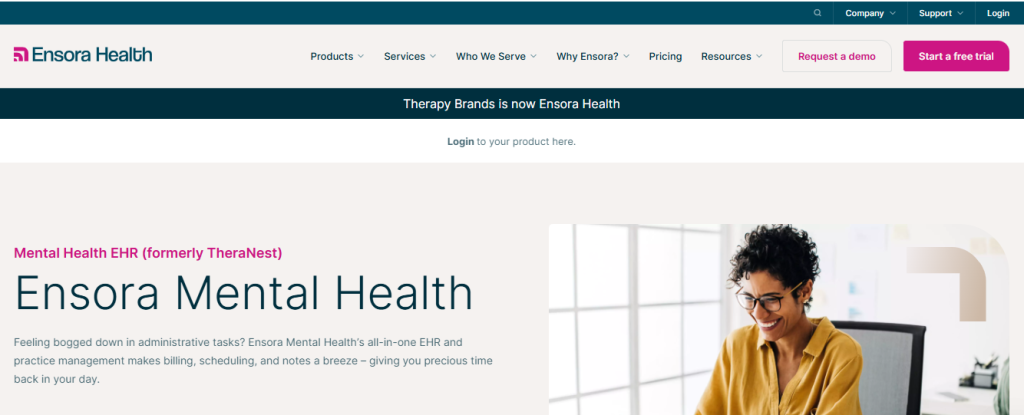
EnsoraHealth offers a comprehensive solution for teletherapy. It provides secure video calls, scheduling, and billing features all in one place. The platform is user-friendly and affordable, making it a top choice for small and medium-sized practices. It also offers excellent customer support, so users can always get help when needed.
3. Healthie
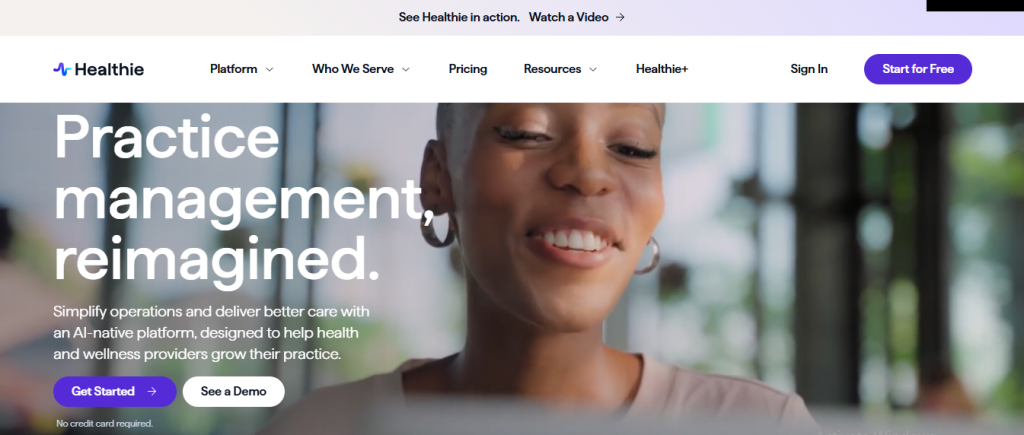
Healthie is a HIPAA-compliant platform that offers secure video conferencing, scheduling, billing, and electronic health record features. It’s ideal for small to medium-sized practices seeking an all-in-one solution for teletherapy and practice management. Healthie is known for its user-friendly interface and excellent customer support.
4. Doxy.me
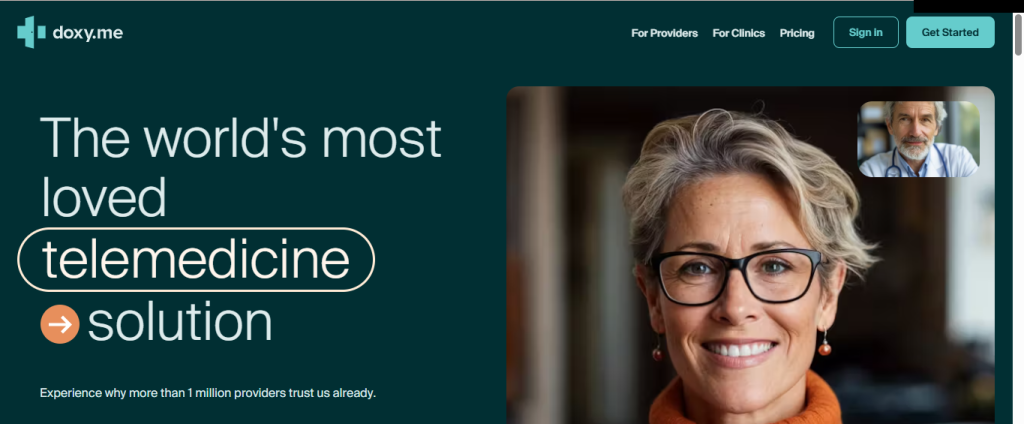
Doxy.me is a simple, browser-based platform that’s perfect for teletherapy. It doesn’t require any downloads, and it offers secure video calls. The platform has a free HIPAA-compliant option, making it an excellent choice for solo therapists. It’s straightforward and doesn’t complicate things, which is exactly what many clinicians need.
5. TheraPlatform
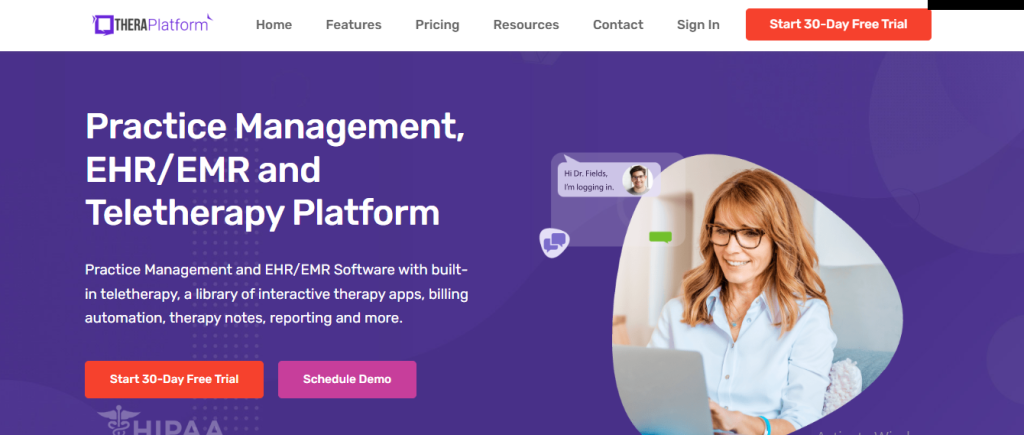
TheraPlatform offers a comprehensive set of tools for teletherapy, including secure video calls, scheduling, and billing. It also includes interactive features like screen sharing and a whiteboard, making it great for engaging sessions. This platform is ideal for practices that need an all-in-one solution for both therapy and practice management.
Conclusion
Building a HIPAA-compliant virtual therapy platform is an essential step for businesses looking to thrive in the future of healthcare. It merges secure technology with compliance precision and scalability, creating a trustworthy digital care solution. At Idea Usher, we focus on developing such platforms from the ground up, ensuring that every detail is covered. We help you create a solution that not only meets compliance standards but also scales with your business. With our expertise, you can confidently offer secure, reliable telehealth services.
Looking to Build a Virtual Therapy Platform With HIPAA Compliance?
At Idea Usher, we bring the expertise of ex-MAANG/FAANG developers with over 500,000 hours of coding experience to build a virtual therapy platform that’s secure and fully HIPAA-compliant. We focus on creating innovative solutions that protect sensitive patient data from the start.
With us, you can confidently scale your platform while maintaining the highest security standards.
- From secure video to encrypted data, we’ve got it covered.
- Scale with confidence on an enterprise-grade architecture.
- Don’t just take our word for it – see our work in action.
Don’t just take our word for it, check out our work and see how we turn ideas into secure, compliant solutions.
Work with Ex-MAANG developers to build next-gen apps schedule your consultation now
FAQs
A1: A HIPAA-compliant platform ensures that all Protected Health Information is encrypted during transmission and storage. It also maintains detailed audit logs to track access and modifications, uses role-based access controls to restrict data visibility, and signs Business Associate Agreements with any third-party vendors to ensure their compliance with HIPAA standards.
A2: Building a HIPAA-compliant virtual therapy platform typically takes several months. The timeline depends on the complexity of the features, integrations required, and the thoroughness of the compliance audit phases. The process can vary based on the specific requirements and scale of the project.
A3: Yes, you can use third-party APIs like Zoom or Twilio, as long as you select their HIPAA-compliant versions. It’s essential to also sign a Business Associate Agreement (BAA) with these providers to ensure they are accountable for safeguarding any PHI handled during communication or data processing.
A4: The cost to build a HIPAA-compliant virtual therapy platform varies significantly depending on the scope and features required. Factors such as the complexity of the platform, required integrations, and the level of compliance needed can all influence the final price, making each project unique.
